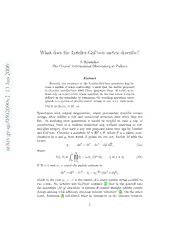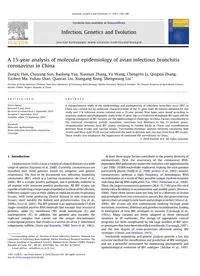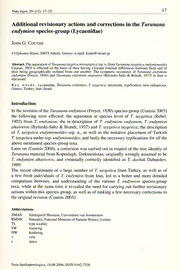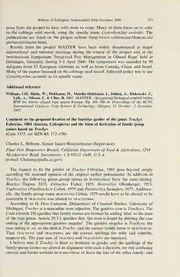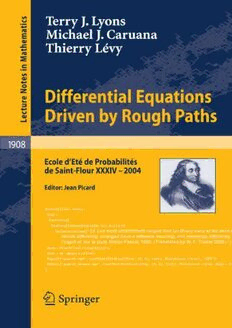
Differential Equations Driven by Rough Paths: École d'Été de Probabilités de Saint-Flour XXXIV - 2004 PDF
Preview Differential Equations Driven by Rough Paths: École d'Été de Probabilités de Saint-Flour XXXIV - 2004
Lecture Notes in Mathematics (cid:49)(cid:57)(cid:48)(cid:56) Editors: J.-M.Morel,Cachan F.Takens,Groningen B.Teissier,Paris Subseries: Écoled’ÉtédeProbabilitésdeSaint-Flour Saint-FlourProbabilitySummerSchool The Saint-Flour volumes are reflections of the courses given at the Saint-Flour Probability Summer School. Founded in (cid:49)(cid:57)(cid:55)(cid:49), this school is organised every yearbytheLaboratoiredeMathématiques(CNRSandUniversitéBlaisePascal, Clermont-Ferrand, France). It is intended for PhD students, teachers and researchers who are interested in probability theory, statistics, and in their applications. The duration of each school is (cid:49)(cid:51) days (it was (cid:49)(cid:55) days up to (cid:50)(cid:48)(cid:48)(cid:53)), and up to (cid:55)(cid:48)participantscanattendit.Theaimistoprovide,inthreehigh-levelcourses,a comprehensive study of some fields in probability theory or Statistics. The lec- turersarechosenbyaninternationalscientificboard.Theparticipantsthemselves alsohavetheopportunitytogiveshortlecturesabouttheirresearchwork. Participantsarelodgedandworkinthesamebuilding,aformerseminarybuiltin the(cid:49)(cid:56)thcenturyinthecityofSaint-Flour,atanaltitudeof(cid:57)(cid:48)(cid:48)m.Thepleasant surroundingsfacilitatescientificdiscussionandexchange. TheSaint-FlourProbabilitySummerSchoolissupportedby: – UniversitéBlaisePascal – CentreNationaldelaRechercheScientifique(C.N.R.S.) – Ministèredéléguéàl’EnseignementsupérieuretàlaRecherche Formoreinformation,seebackpagesofthebookand http://math.univ-bpclermont.fr/stflour/ JeanPicard SummerSchoolChairman LaboratoiredeMathématiques UniversitéBlaisePascal (cid:54)(cid:51)(cid:49)(cid:55)(cid:55)AubièreCedex France Terry J. Lyons Michael Caruana · Thierry Lévy Differential Equations Driven by Rough Paths École d’Été de Probabilités de Saint-Flour XXXIV - (cid:50)(cid:48)(cid:48)(cid:52) (cid:65)(cid:66)(cid:67) Authors TerryJ.Lyons ThierryLévy MichaelCaruana DépartementdeMathématiqueset MathematicalInstitute Applications UniversityofOxford ÉcoleNormaleSupérieure (cid:50)(cid:52)(cid:45)(cid:50)(cid:57)St.Giles' (cid:52)(cid:53),rued’Ulm OxfordOX(cid:49)(cid:51)LB (cid:55)(cid:53)(cid:50)(cid:51)(cid:48)ParisCedex(cid:48)(cid:53) UnitedKingdom France e-mail:tlyons@maths.ox.ac.uk e-mail:thierry.levy@ens.fr caruana@maths.ox.ac.uk Cover:BlaisePascal((cid:49)(cid:54)(cid:50)(cid:51)(cid:45)(cid:49)(cid:54)(cid:54)(cid:50)(cid:41) LibraryofCongressControlNumber:(cid:50)(cid:48)(cid:48)(cid:55)(cid:57)(cid:50)(cid:50)(cid:57)(cid:51)(cid:56) MathematicsSubjectClassification((cid:50)(cid:48)(cid:48)(cid:48)(cid:41)(cid:58)(cid:54)(cid:48)(cid:72)(cid:49)(cid:48)(cid:44)(cid:54)(cid:48)(cid:72)(cid:48)(cid:53)(cid:44)(cid:51)(cid:52)(cid:65)(cid:57)(cid:57)(cid:44)(cid:54)(cid:48)(cid:72)(cid:51)(cid:48) ISSNprintedition:(cid:48)(cid:48)(cid:55)(cid:53)(cid:45)(cid:56)(cid:52)(cid:51)(cid:52) ISSNelectronicedition:(cid:49)(cid:54)(cid:49)(cid:55)(cid:45)(cid:57)(cid:54)(cid:57)(cid:50) ISSNEcoled’EtédeProbabilitésdeSt.Flour,printedition:(cid:48)(cid:55)(cid:50)(cid:49)(cid:45)(cid:53)(cid:51)(cid:54)(cid:51) ISBN-10 (cid:51)(cid:45)(cid:53)(cid:52)(cid:48)(cid:45)(cid:55)(cid:49)(cid:50)(cid:56)(cid:52)-4SpringerBerlinHeidelbergNewYork ISBN-13 (cid:57)(cid:55)(cid:56)(cid:45)(cid:51)(cid:45)(cid:53)(cid:52)(cid:48)(cid:45)(cid:55)(cid:49)(cid:50)(cid:56)(cid:52)(cid:45)(cid:56)SpringerBerlinHeidelbergNewYork DOI(cid:49)(cid:48)(cid:46)(cid:49)(cid:48)(cid:48)(cid:55)/(cid:57)(cid:55)(cid:56)(cid:45)(cid:51)(cid:45)(cid:53)(cid:52)(cid:48)(cid:45)(cid:55)(cid:49)(cid:50)(cid:56)(cid:53)(cid:45)(cid:53) Thisworkissubjecttocopyright.Allrightsarereserved,whetherthewholeorpartofthematerialis concerned,specificallytherightsoftranslation,reprinting,reuseofillustrations,recitation,broadcasting, reproductiononmicrofilmorinanyotherway,andstorageindatabanks.Duplicationofthispublication orpartsthereofispermittedonlyundertheprovisionsoftheGermanCopyrightLawofSeptember(cid:57), (cid:49)(cid:57)(cid:54)(cid:53),initscurrentversion,andpermissionforusemustalwaysbeobtainedfromSpringer.Violationsare liableforprosecutionundertheGermanCopyrightLaw. SpringerisapartofSpringerScience+BusinessMedia springer.com ©Springer-VerlagBerlinHeidelberg(cid:50)(cid:48)(cid:48)(cid:55) Theuseofgeneraldescriptivenames,registerednames,trademarks,etc.inthispublicationdoesnotimply, evenintheabsenceofaspecificstatement,thatsuchnamesareexemptfromtherelevantprotectivelaws andregulationsandthereforefreeforgeneraluse. TypesettingbytheauthorsandSPiusingaSpringerLATEXmacropackage Coverdesign:design&productionGmbH,Heidelberg Printedonacid-freepaper SPIN:(cid:49)(cid:50)(cid:48)(cid:51)(cid:49)(cid:53)(cid:57)(cid:55) (cid:86)(cid:65)(cid:52)(cid:49)(cid:47)(cid:51)(cid:49)(cid:48)(cid:48)/SPi (cid:53)(cid:52)(cid:51)(cid:50)(cid:49)(cid:48) A Word About the Summer School The Saint-Flour Probability Summer School was founded in 1971. It is sup- portedbyCNRS,the“Minist`eredelaRecherche”,andthe“Universit´eBlaise Pascal”. Threeseriesoflecturesweregivenatthe34thProbabilitySummerSchool in Saint-Flour (July 6–24, 2004), by the Professors Cerf, Lyons and Slade. We have decided to publish these courses separately. This volume contains the course of Professor Lyons; this final version has been written with two participants of the school, Michael Caruana and Thierry L´evy. We cordially thank them, as well as Professor Lyons for his performance at the summer school. Sixty-nineparticipantshaveattendedthisschool.Thirty-fiveofthemhave givenashortlecture.Thelistsofparticipantsandofshortlecturesareenclosed at the end of the volume. Here are the references of Springer volumes which have been published prior to this one. All numbers refer to the Lecture Notes in Mathematics series,exceptS-50whichreferstovolume50oftheLecture Notes in Statistics series. 1971:vol307 1980:vol929 1990:vol1527 1998:vol1738 1973:vol390 1981:vol976 1991:vol1541 1999:vol1781 1974:vol480 1982:vol1097 1992:vol1581 2000:vol1816 1975:vol539 1983:vol1117 1993:vol1608 2001:vol1837&1851 1976:vol598 1984:vol1180 1994:vol1648 2002:vol1840&1875 1977:vol678 1985/86/87:vol1362&S-50 1995:vol1690 2003:vol1869&1896 1978:vol774 1988:vol1427 1996:vol1665 2004:vol1878,1879&1908 1979:vol876 1989:vol1464 1997:vol1717 2005:vol1897 Further details can be found on the summer school web site http://math.univ-bpclermont.fr/stflour/ Jean Picard Clermont-Ferrand, September 2006 Foreword I am ashamed to say that my first visit to the annual summer school at Saint Flour was to give the lectures recorded in the pages to follow. The attentive and supportive audience made the opportunity into a true privilege. I am gratefulfortheopportunity,toJeanPicardandhisteamfortheirconsiderable efforts and the audiences for their interest and patience. I had been very busy in the weeks before the lectures and came equipped with a detailed outline and bibliography and a new tablet PC. Unlike my well-organised co-authors, who came with their printed notes, I wrote the detailed lecture notes as I went. Jean Picard, with his inevitable charm, tact and organisational skill, brought to the very rural setting of St Flour, a fast laserprinterandeverynighttherewasalongperiodprintingoffandstapling the notes for the next days lecture (60 times over, as there was no Xerox machine!). Thenoteswere,inthemain,hand-writtenonthetabletPC,supplemented by a substantial set of preprints and publications for the improvised library. This worked adequately and also provided some amusement for the audience: thecomputerplacedatimestamponeachpagepermittingtheaudiencetosee which pages were written at 2.00am and how long each page (that survived) took to write. Writing ten 90-min lectures in two weeks was a demanding but enjoyable task. Twomembers of the meeting, Michael Caruana, and Thierry L´evyoffered to convert the notes into the form you find here. They have taken my presen- tationtopieces,lookedatitafresh,andproducedaversionthatiscleanerand more coherent than I ever could have managed or imagined. I do not know howtoexpressmygratitude.Theoriginalhand-writtennotesare,atthetime of writing, to be found at: http://sag.maths.ox.ac.uk/tlyons/st flour/index.htm Thegoalofthesenotesistoprovideastraightforwardandself-supporting butminimalistaccountofthekeyresultsformingthefoundationofthetheory of rough paths. The proofs are similar to those in the existing literature, but have been refined with the benefit of hindsight. We hope that the overall VIII Foreword presentation optimises transparency and provides an accessible entry point into the theory without side distractions. The key result (the convergence of Picard Iteration and the universal limit theorem) has a proof that is signifi- cantly more transparent than in the original papers. We hope they provide a brief and reasonably motivated account of rough paths that would equip one to study the published work in the area or one of the books that have or are about to appear on the topic. Mathematical Goal Thetheoryofroughpathsaimstocreatetheappropriatemathematicalframe- work for expressing the relationships between evolving systems, by extending classical calculus to the natural models for noisy evolving systems, which are often far from differentiable. A rather simple idea works; differential equations obviously have meaning when used to couple smoothly evolving systems. If one could find metrics on smooth paths for which these couplings were uniformly continuous, then one could complete the space. The completions of the space of smooth paths are not complicated or too abstract and considering these spaces of “generalised paths” as the key spaces where evolving systems can be defined, modelled andstudiedseemsfruitful.Thisapproachhasanumberofapplications,afew of which are mentioned in the notes. But the minimalistic approach we have set ourselves means we limit such discussion severely – the applications seem to still be developing and quite distinctive so we would commit the reader into much extra work and defeat the overall goal of this text. In Saint Flour it was natural to give probabilistic applications. The hand-written notes give the first presentation of a proof for a quite precise extension of the support theorem not reproduced here. In1936YoungintroducedanextensiontoStieltjes integration whichapp- lies to paths of p-variation less than 2. In a separate line of development, Chen (1957, geometry) and more recently Fliess (control theory), E. Platen (stochastic differential equations) and many others were lead to consider the sequenceofiteratedintegralsofapathxinordertoobtainapathwiseTaylor series of arbitrary order for the solution y to the vector equation dy =f(y )dx . t t t Thesenotesdevelopthenon-commutativeanalysisrequiredtointegratethese two developments into the theory of rough paths, a mathematical framework for modelling the interaction between evolving systems. Oxford, March 2006 Terry J. Lyons Introduction These notes put on record a series of ten lectures delivered by Terry Lyons at the Saint Flour summer school in July 2004. Terry Lyons’s declared pur- pose was to bring the audience to the central result of the theory of rough paths along the straightest possible path. These notes, which follow closely the content of the lectures, are thus primarily intended for a reader who has never been exposed to the theory of rough paths. This introduction gives an overview of the subject and presents the content of each chapter, especially the first three, in some detail. The theory of rough paths can be briefly described as a non-linear exten- sion of the classical theory of controlled differential equations which is robust enoughtoallowadeterministictreatmentofstochasticdifferentialequations, or even controlled differential equations driven by much rougher signals than semi-martingales. Let us first explain what a controlled differential equation is. In a setting where everything is differentiable, it is a differential equation of the form Y˙ =F(X˙ ,Y ), Y =ξ, (1) t t t 0 where X is a given function, ξ is an initial condition, and Y is the unknown. The mapping F is taken to be linear with respect to its first variable. If F didnotdependonitsfirstvariable,thiswouldbethemostgeneralfirst-order time-homogeneous differential equation. The function F would be a vector field and Y would be the integral curve of this vector field starting at ξ. If now we had Y˙ = F(t,Y ) instead of (1), this would be the most general t t first-ordertime-inhomogeneousdifferentialequation.ThesolutionY wouldbe an integral curve of the time-dependent vector field F. Equation (1) is really of this kind, except that the time-inhomogeneity has been made explicitly dependent on a path X, which is said to control the equation. The physical meaningof(1)isthefollowing:ateachtime,Y describesthestateofacomplex system (for instance the brain, or a car) and it evolves as a function of its presentstateandtheinfinitesimalvariationofanexternalparameter(likethe air pressure near the ears or the angle of the steering wheel). X Introduction Stochastic differential equations are of the form (1), except that X is usually far from being differentiable. They are often written under the form dY =f(Y )dX , Y =ξ, (2) t t t 0 which emphasises the linear dependence of the right-hand side with respect to dX . K. Itoˆ, in introducing the concept of strong solution, emphasised t the fact that the resolution of a stochastic differential equation amounts to theconstructionofamappingbetweenspacesofpaths.Forthisreason,when the (deterministic) equation (2) admits a unique solution, we denote this solution by Y =I (X,ξ), and we call I the Itˆo map associated with f. f f The classical theory of differential equations tells us that if f is Lipschitz continuous, then (2) admits a unique solution as soon as X has bounded variation and this solution has bounded variation. Moreover, the Itoˆ map I f is continuous as a mapping between spaces of paths with bounded variation. The fundamental results of the theory of rough paths resolve the following two problems: 1. Identify a natural family of metrics on the space of paths with bounded variation such that the Itoˆ map X (cid:1)→ I (X,ξ) is uniformly continuous f with respect to these metrics, at least when f is regular enough. 2. Describe concretely the completion of the space of paths with bounded variation with respect to these metrics. Letusgivethesolutionsinaverycondensedform.Inthesimplestsetting,the appropriate metrics depend on a real parameter p ∈ [1,+∞) and two paths are close in the so-called p-variation metric if they are close in p-variation (a parameter-independent version of 1-H¨older norm), as well as their first p (cid:5)p(cid:6) iterated integrals. An element of the completion of the space of paths withboundedvariation onsomeinterval[0,T]withrespecttothep-variation metric is called a rough path and consists in the data, for each sub-interval [s,t] of [0,T], of (cid:5)p(cid:6) tensors – the first of which is the increment x − x t s of some continuous path x – which summarise the behaviour of this rough path on [s,t] in an efficient way, as far as controlled differential equations are concerned. This collection of tensors must satisfy some algebraic consistency relations and some analytic conditions similar to 1-H¨older continuity. p ThetheoremwhichisprovedinChap.5ofthesenotesstates,underappro- priatehypotheses,theexistenceanduniquenessofthesolutionofadifferential equation controlled by a rough path. ItisworthnotingthatifthecontrolX takesitsvaluesinaone-dimensional space, then the theory of rough paths becomes somehow trivial. Indeed, pro- vided f is continuous, the Itoˆ map is continuous with respect to the topology of uniform convergence and extends to the space of all continuous controls. The theory of rough paths is thus meaningful for multi-dimensional controls. Thecoexistenceofalgebraicandanalyticaspectsinthedefinitionofrough pathsmakesitsomewhatdifficultatfirsttogetageneralpictureofthetheory. Introduction XI Chapters 1 and 2 of these notes present separately the main analytical and algebraic features of rough paths. Chapter 1 is devoted to the concept of p-variation of a Banach-valued continuousfunctiononaninterval.GivenaBanachspaceV andarealnumber p≥1,acontinuousfunctionX :[0,T]−→V issaidtohavefinitep-variationif (cid:1) sup |X −X |p <+∞, ti+1 ti D where the supremum is taken over all subdivisions D of [0,T]. This is equiv- alent to the fact that X can be reparametrised as a 1-H¨older continuous p function. T(cid:2)he central result of this chapter states that the classical Stieltjes inte- t gral Y dX , defined when Y is continuous and X has bounded variation, 0 u u has an extension to the case where X and Y have finite p- and q-variation, respectively, provided p−1+q−1 > 1. Moreover, in this case, the integral, as a function of t, has finite p-variation, like X. This was discovered by Young around1930andallowsonetomakesenseofandeven,iff isregularenough, to solve (2) when X has finite p-variation for p<2. On the other hand, if X is a real-valu(cid:3)ed path with finite p-variation for p≥2, then in general the Riemann sums X (X −X ) fail to converge ti ti+1 ti a(cid:2)s the mesh of the subdivision tends to 0 and one cannot anymore define t X dX . One could think that this threshold at p = 2 is due to some 0 u u weakness of the Young integral, but this is not the case. A simple and very concrete example shows that the mapping which to a path X = (X ,X ) : 1 2 [0,T]−→R2 with bounded variation associates the real number (cid:4) 1 T X dX −X dX (3) 2 1,u 2,u 2,u 1,u 0 is not continuous in p-variation for p>2. The number defined by (3) is not just a funny counter-example. Firstly, it has a very natural geometric interpretation as the area enclosed by the curve X. Secondly, it is not very difficult to write it as the final value of the solutionofadifferentialequationcontrolledbyX,withaveryregular,indeed apolynomialvectorfieldf.So,evenwithapolynomialvectorfield,twopaths which are close in p-variation for p > 2 do not determine close responses in the controlled equation (2). This is a first hint at the fact that it is natural to declare two paths with finite p-variation for p > 2 close to each other only if theirdifferencehasasmalltotalp-variationandtheareasthattheydetermine are close. It is interesting to note that stochastic differential equations stand just above this threshold p = 2. Indeed, almost surely Brownian paths have infi- nite two-variation and finite p-variation for every p > 2. The convergence in probability of the Riemann sums for stochastic integrals is, from the point of view of the Young integral, a miracle due to the very special stochastic structure of Brownian motion and the subtle cancellations it implies.
The list of books you might like

The 48 Laws of Power

The Spanish Love Deception

$100m Offers

Haunting Adeline
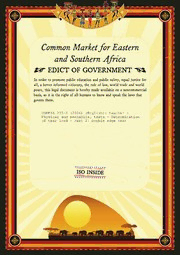
COMESA 235-2: Leather - Physical and mechanical tests - Determination of tear load - Part 2: Double edge tear

Negro zine 2 (2006 Apr)

Commentary on Ephesians, Volume 1 of 2
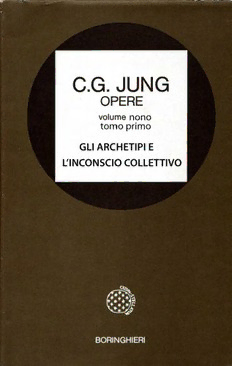
Opere. Gli archetipi e l'inconscio collettivo
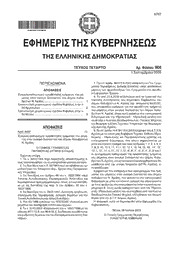
Greek Government Gazette: Part 4, 2005 no. 906
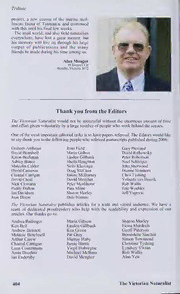
Thank You from the Editors

Lauter Gründe, warum die Welt ganz anders ist. Die Rätsel des Kosmos, die Grenzen des Wissens.

Bursa Ticaret ve Sanayi Odası
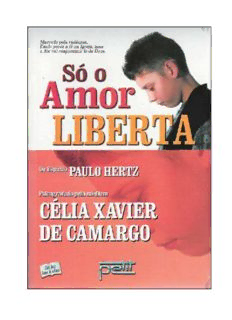
Só o Amor Liberta
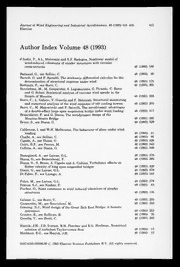
Journal of Wind Engineering and Industrial Aerodynamics 1993: Vol 48 Index
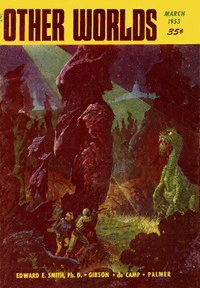
What Do You Read? by Boyd Ellanby
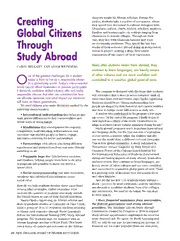
ERIC EJ792671: Creating Global Citizens through Study Abroad

Sørvik Gravlund

25 bài tập trắc nghiệm Tiếng Anh 11
